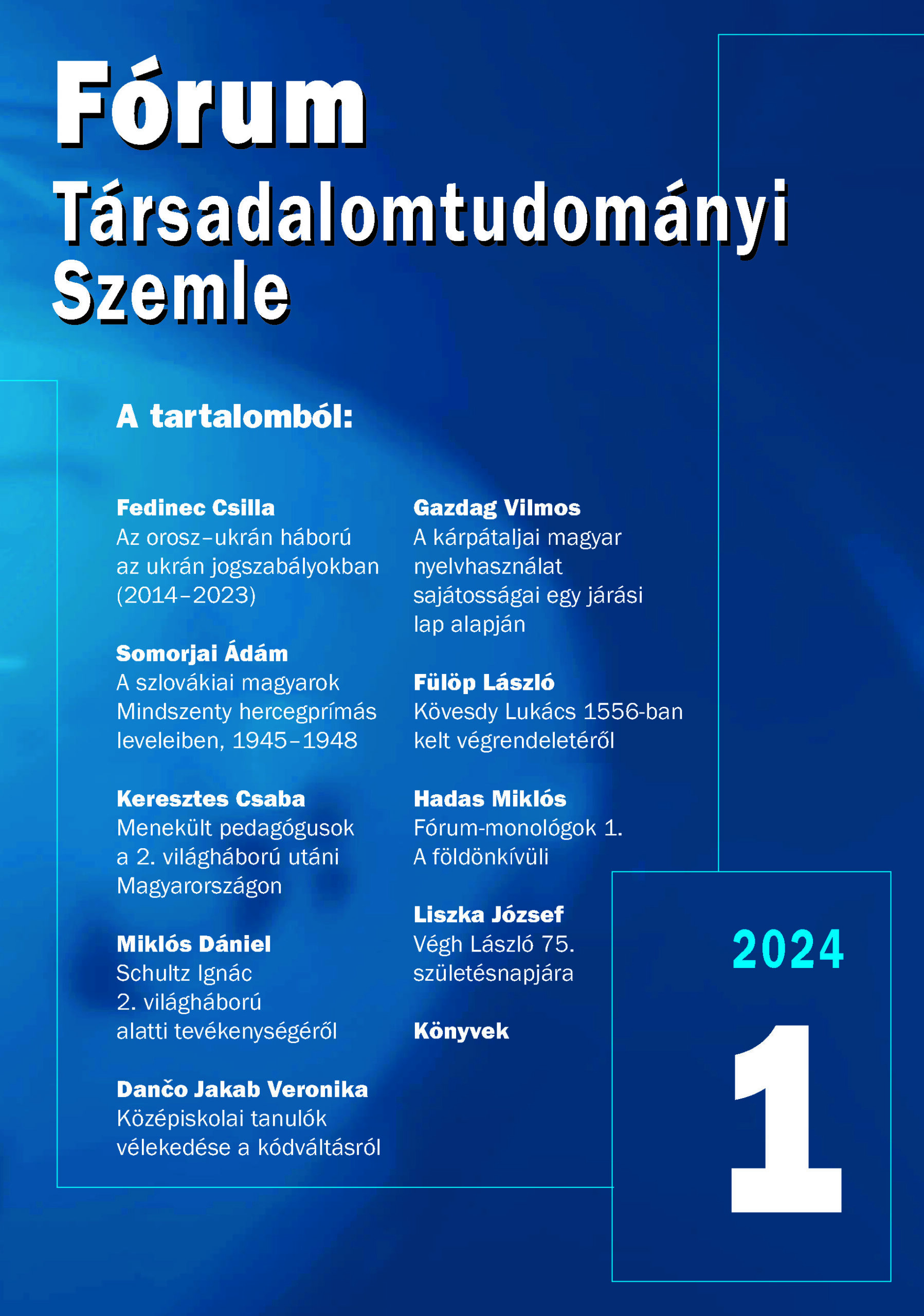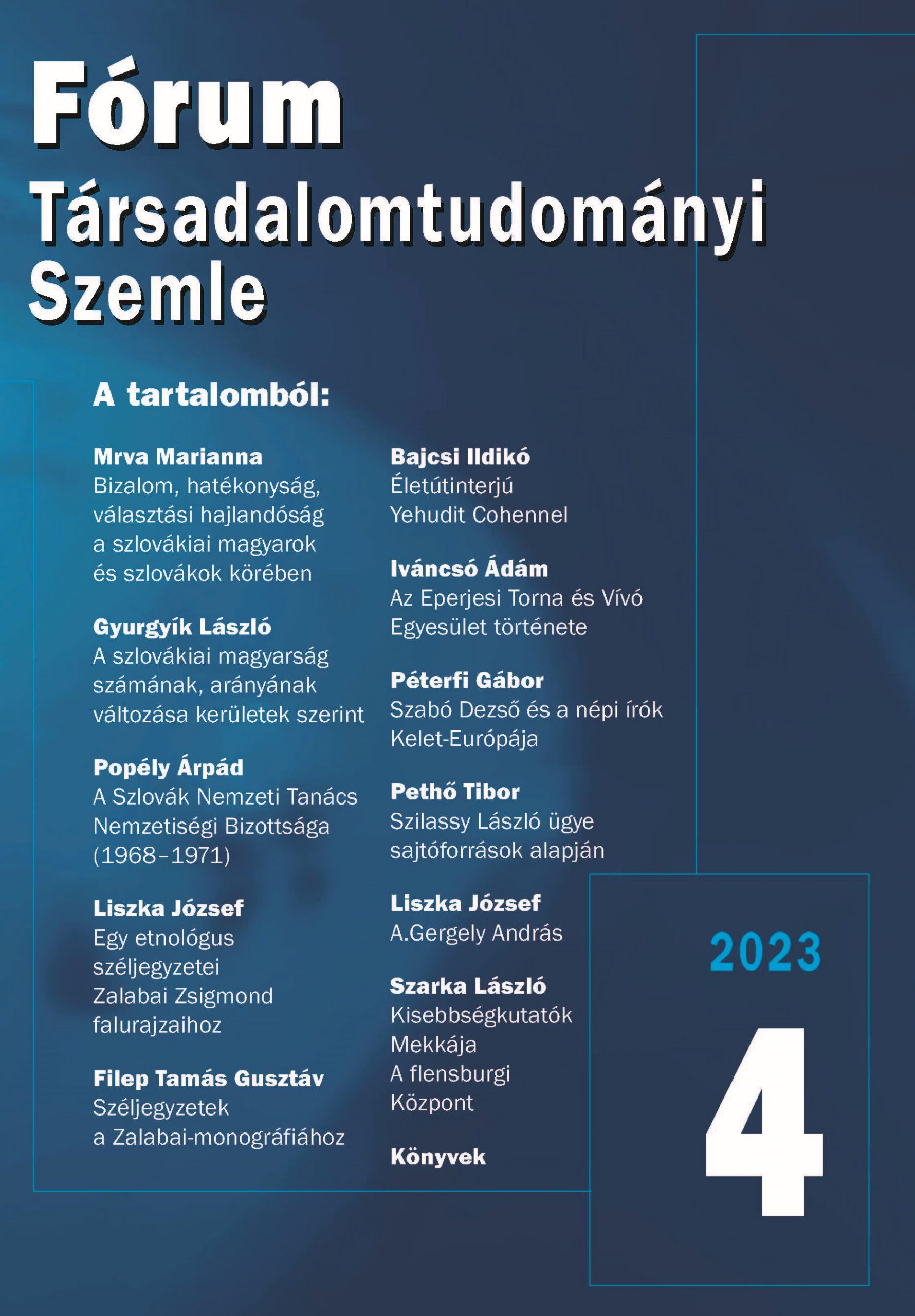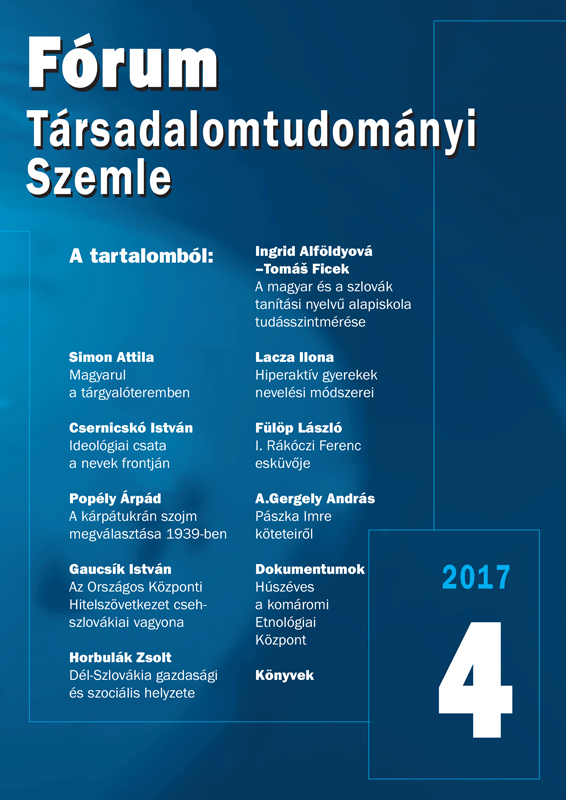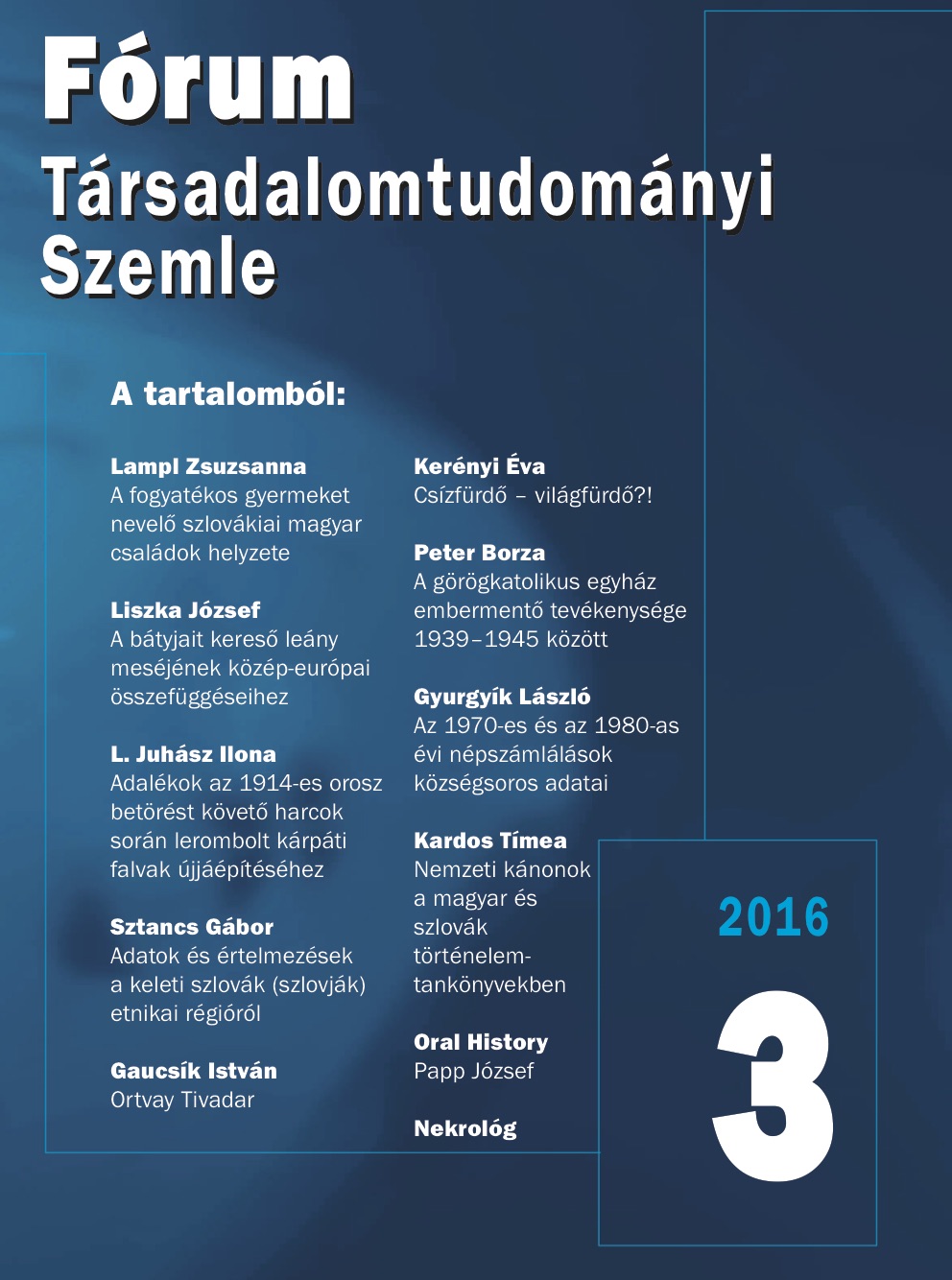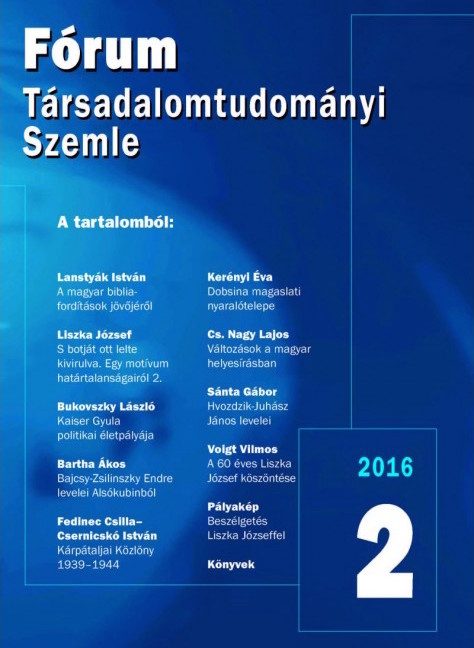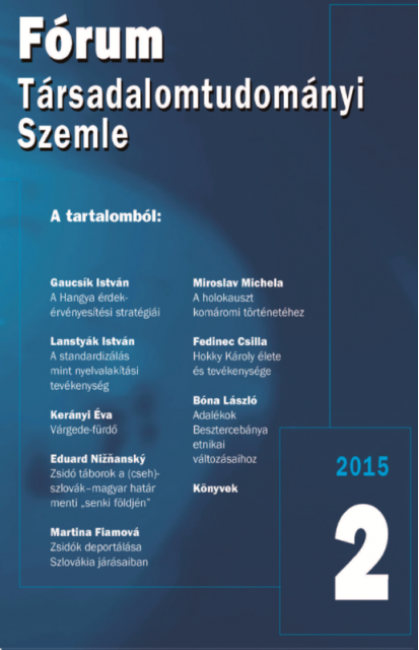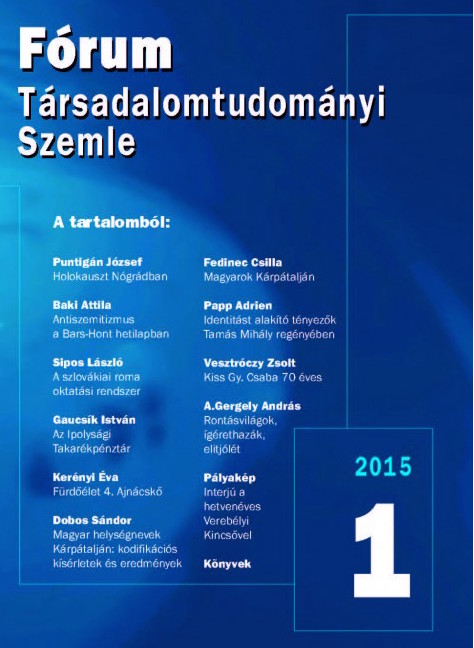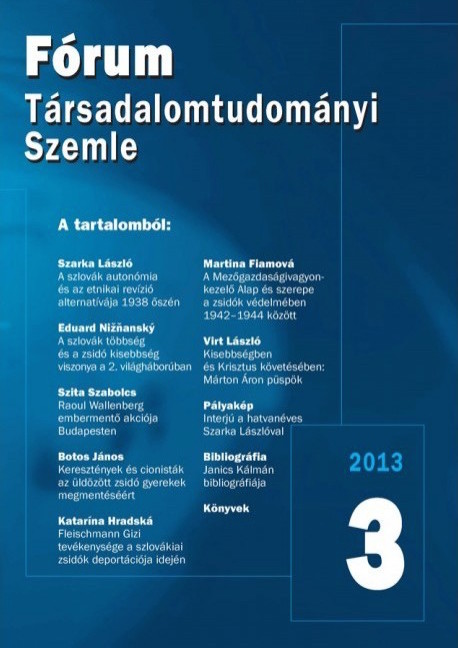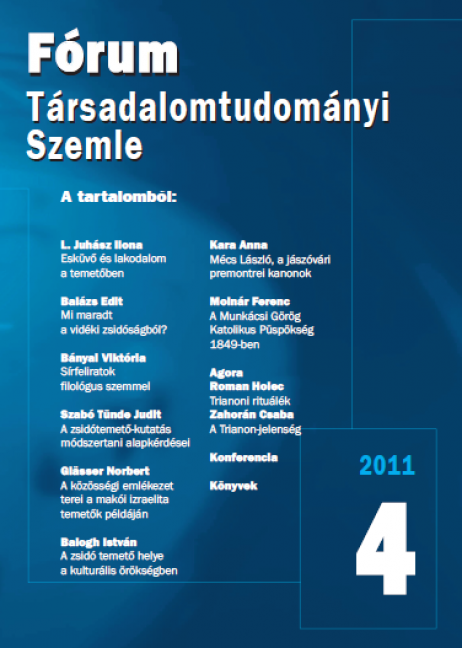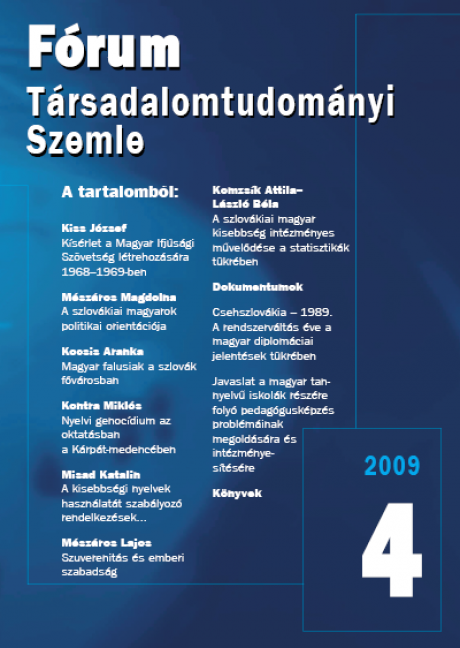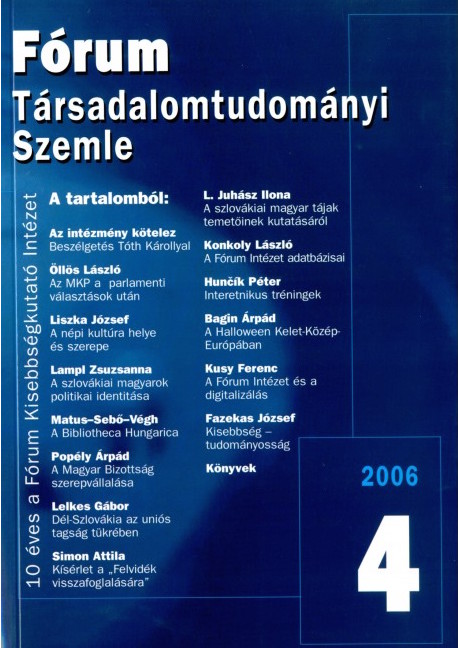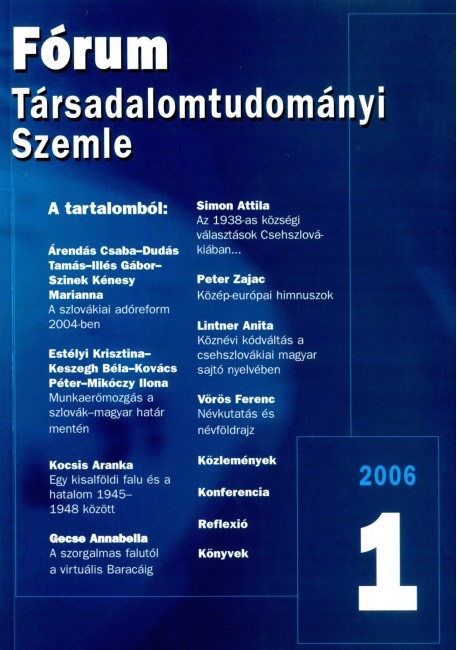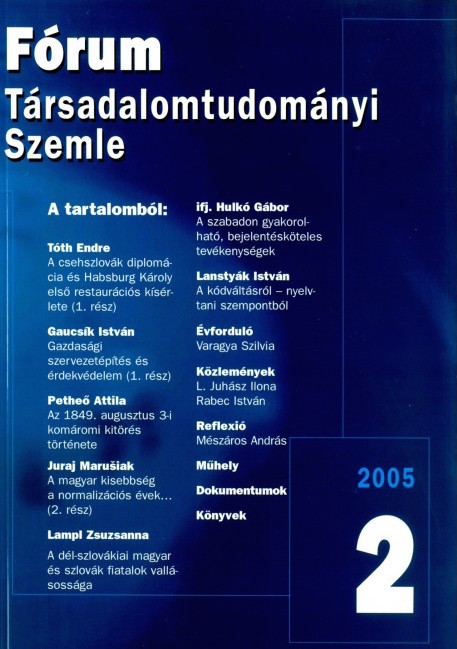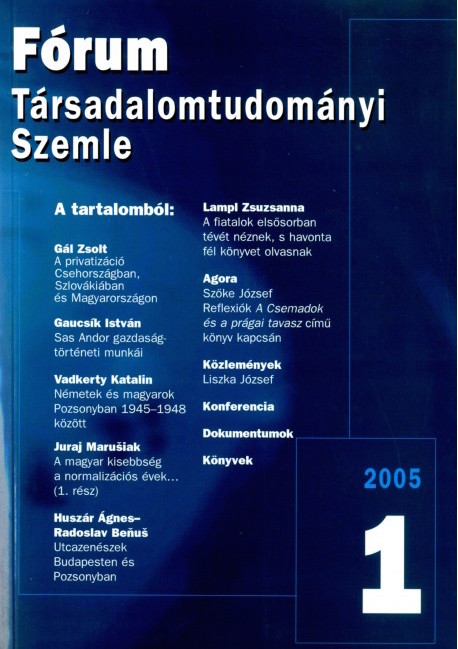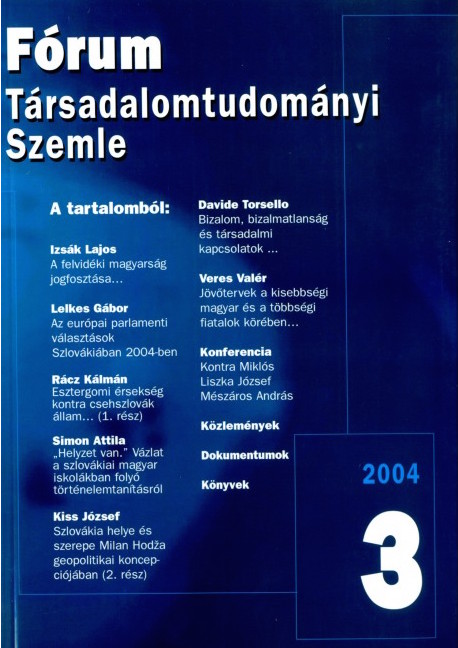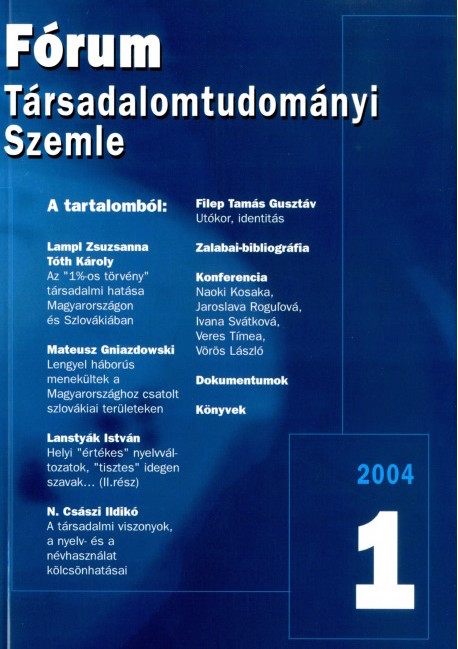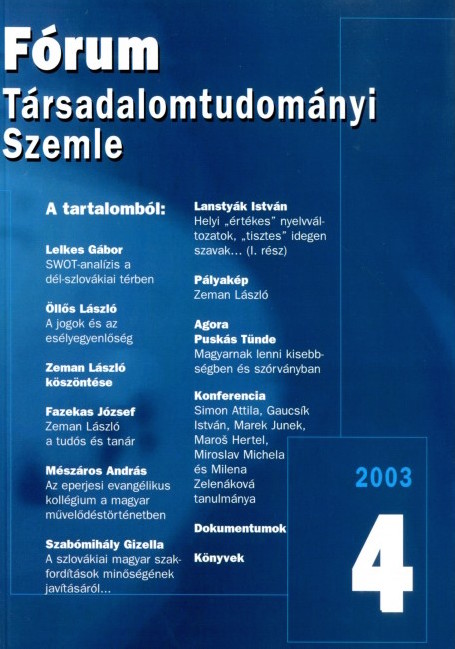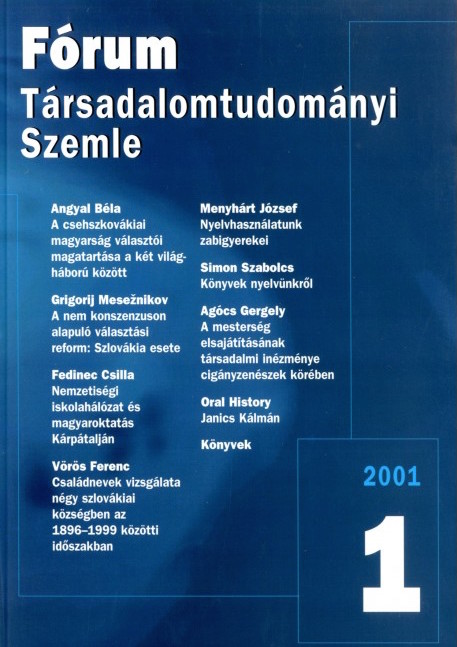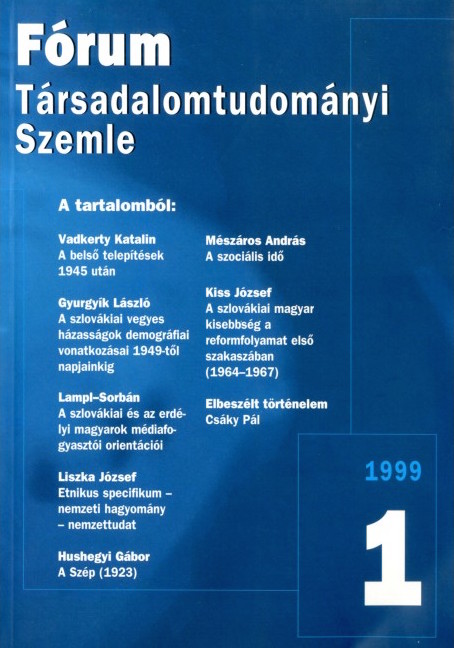Writings of the Young Andor Sas
The study presents and analyses the works of Andor Sas written in his youth. It categorizes his articles and reviews written before 1918 into five themes: 1. Hegel’s philosophy and its Hungarian implications (e.g. its influence on Imre Madách’s Tragedy of Man); 2. parts of Hungarian philosophy concerning conventional wisdom and the impact of Schelling; 3. German Romanticism; 4. Goethe’s spirituality, his works and the theme of Faust; 5. the cultural struggles of the First World War and the problem of so-called cultural pessimism.
Additions to the History of the Creation of the „Danube Border” II. Parallels and Differences at Certain Stages in the Lives of Two Central European Geographers
One of the cornerstones of the Czechoslovak peace delegation’s territorial claims against Hungary at the Paris peace talks at the end of the First World War was the securing of the new state’s ‘Danube border’ as its territorial claims against Hungary. The Czechoslovak negotiating delegation’s geography expert, Viktor Dvorský, played a decisive role in laying the geographical foundations for the system of arguments used to support this claim. Years later, his system of arguments was evaluated by Gyula Prinz, a Hungarian who was his contemporary, in a unique approach. Although the two young geographers were considered to be “propmen” in the tide of the events of 1918/19, their professional knowledge had a decisive influence on the processes in certain cases, albeit in different ways, and their figures appear in contemporary documents. A detailed presentation and analysis of two such documents will shed more light on and clarify their role in the events of the time. By comparing the biographies of the two prominent Czech and Hungarian geographers of the post-World War I period and by presenting in more detail the major stages of their careers, parallels can be drawn which will provide a framework for further analyses which will clarify and specify the extent to which, and the way in which the Hungarian and Slovakian geographers differ in their treatment and interpretation of this issue of great importance in their common history.
From Disfranchisement to Parliamentary Representation. The First Hungarian Representatives in the Parliament of Prague and Bratislava
After World War II the Hungarian minority in Czechoslovakia was not only deprived of its citizenship but also its franchise. For this reason, in parliamentary elections of 1946 and 1948, the Hungarian population was not allowed to take part. The first parliamentary elections in which Hungarians could finally vote, and Hungarian representatives could be elected to the parliaments of Prague and Bratislava, were the elections in 1954. While out of 368 representatives of the Czechoslovak Parliament in Prague 9 were Hungarians, this rate in the Slovak Parliament in Bratislava is 13, out of 104 representatives. The study features both their election and activities. From then on, until the democratic turn in 1989, the Hungarian minority was constantly provided seats in both parliaments. However, the Hungarian MPs were not elected by the Hungarian community but were chosen and brought to parliament by the communist party. Their charge was to demonstrate the “proper” nationality policy of the communist party. Opportunities to stand for the Hungarian minority´s interests were almost none.
The Memory of Young People From Vojvodina Born in Mixed Marriages About the Yugoslav Wars of the 1990s
Although armed conflicts in the South Slavic wars of the 1990s avoided Vojvodina, Serbia’s multi-ethnic northern province, the war left deep scars on its population. Some argue that the province avoided conflict in part because it had a relatively high rate of ethnic-based mixed marriages in Yugoslavia, which served as a bond between Serbs and ethnic minorities. The state-sponsored nationalist propaganda of the 1990s had a detrimental effect on ethnic minorities in Vojvodina, many of whose members left the country during this period. In the 1990s, the young minority generation may have been the most adversely affected group, as they faced overt nationalism, alienation and the prospect of being side-lined and having their childhood stolen. For those born into mixed marriages, one of the milestones of their lives was that when they enrolled in primary and secondary school, their parents were given the choice of language of education (majority or minority). The aim of this research is to examine the role that family background played in the self-representation and meaning-making of this generation during the turbulent 1990s. The thesis is based on an in-depth analysis of interviews with Generation Y children born in mixed Serbian–Hungarian marriages. The results show that the choice of school language has an impact on children’s identity and group affiliation. It is also found that those who received education in a minority language experienced more ethnic-based incidents of nationalism during their education than those whose parents chose to attend a majority language school. The research approached the issue from two directions. Firstly, it provides a brief insight into the Serb–Hungarian relationship through a historical overview of political and social events in the 1990s, in comparison to the Serb–Croat–Bosnian relationship, which is the most discussed in the literature. It also explores the situation of children born in Hungarian minority and Serbian majority marriages, which is rarely discussed from a qualitative perspective in the literature.
Changes in Hungarian–Slovak Relations in the 20th Century. The Dynamics of the Development of Relations and the Sources of Conflict, Assimilation
The present study analyses the relationship between majority and minority in our geopolitical space on two levels. In the first part of the study, I focused on the typologization and periodization of minority issues in 20th and 21st century Europe. My primary interest, however, was to integrate the issue of Slovak–Hungarian relations and their development within the Czechoslovak Republic and later within the independent Slovak Republic into the various developmental stages of minority issues in Europe. The coexistence of minority and majority, as we know from history, requires not only pragmatic-political and legislative-technical solutions, but also emotional involvement and spiritual strength to overcome obstacles to the implementation of functioning models of mutual coexistence and tolerance. From the point of view of scientific knowledge, we are faced with the challenge of how to deepen our understanding of minority issues and mutual coexistence (of both allochthonous and autochthonous minorities) in different parts of Europe. The solutions have individual characteristics, especially when we analyse the region of Central and Eastern Europe, where the historical pattern of coexistence is based on the structure of the particular ethnic conflict existing in the so-called nation-states. The current social situation also makes us aware that national minority issues in Central and Eastern Europe are still an open object of research.
Hungarian–Slovak Disputes After 1989. The Limits of Our Strategies
After 1989, two strategies characterised Hungarian politics in Slovakia. The first was the political cooperation that was seen as a way to achieve the rights and positions necessary for the survival and development of the Hungarian minority. The other believed that this could be achieved mainly through pressure, i.e. by force. Neither proved to be a success. Without a substantial change in the national values of the Slovak population, there will remain a layer of voters who consider Hungarians to be dangerous and who consider it right to maintain the previous rules and measures. But our times offer a new opportunity, an opportunity in which Hungarian politics in Slovakia can rise far above itself. For the region is in a situation in which Slovak–Hungarian reconciliation can help make a great step forward. In the competitive environment within the European Union, it is more than necessary for the states of the region to join forces. However, Slovak–Hungarian reconciliation is essential if their relations are to develop from a relationship of interest to one of trust. A revival of the sense of belonging between Hungarians and Slovaks would give impetus to both nations and certainly to the whole region.








